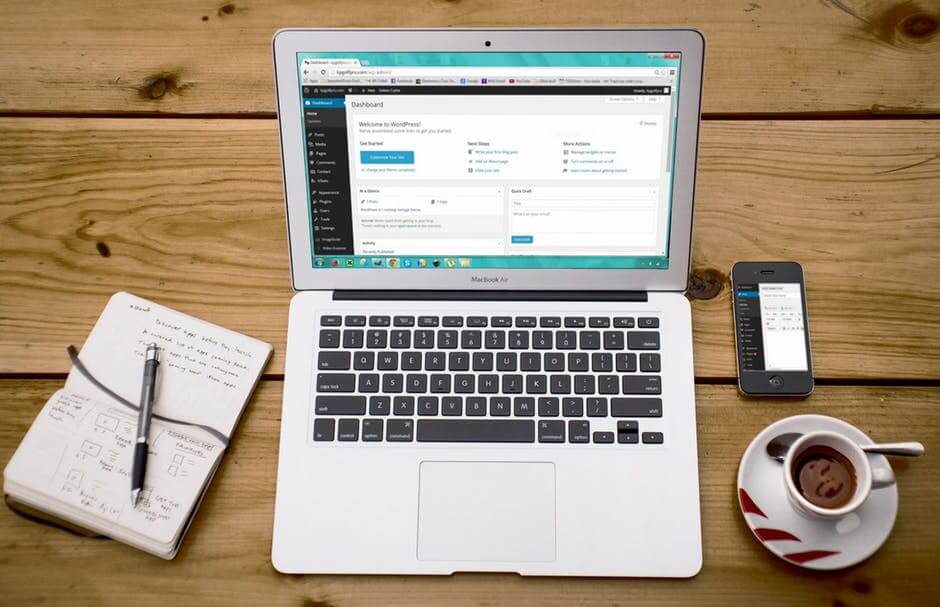Business
How to create a digital magazine that you can monetize
Taking these strategic steps will help you build a brand and monetize your digital magazine by attracting more audience online.

Content is king in the online world, and the magazines that went from print media to digital editions are proving that. Having involved the latest technology and some super innovative monetization strategies that are personalized for the reader, the biggest names in the industry are killing it.
However, you don’t need to be on top of the list if you want to make it as an owner of a digital magazine. The revenue in this field is increasing every year, so you too deserve a piece of the pie if you’re willing to do the work it takes to turn a standard blog and website into a magazine.
There are some specifics to keep in mind that make the process quite different from optimizing, ranking and promoting the average website. You can still create your platform on WordPress and use all the free plug-ins available to make it look great and function well. But to really have a magazine and provide that unique experience magazine readers are looking for, you’ll need to take a few extra steps. Here they are:
1. Get a magazine theme.
It all begins with the theme you choose for your website. It can’t just be the standard layout, as you’ll miss out on many powerful features. While a free WordPress theme might work for now if you’re just starting out, you won’t go wrong if you purchase a premium one from day one. That’s because their code is cleaner, they are unique and highly customizable, more secure, fully responsible, and have tons of amazing features you never even knew existed.
It’s worth exploring different approaches to creating a magazine. While you will definitely need a self-hosted WordPress site as it’s where you’ll build traffic and gain authority, there are other great ways to do that. For example, with this online magazine creator, you can create your own magazine for free and then embed it on your website.
2. Publish fresh content more than once daily.
As a marketer, writer and/or website owner, you know pretty well why a blog is key for a platform and why you need to publish content often. You also know that pieces with 2,000+ words rank better than short blog posts. Whenever you search for a keyword, you’ll notice that Google ranks higher the results of pages containing a minimum of 2K solid and practical content. That’s what so many influencers and gurus are doing too. Some even like to go way above 2,000 words, like Neil Patel, for example.
But with digital magazines it’s different. You’re not only part of the publishing industry, you’re in the news business. That means often having pieces of 500 words, or just videos and images with a text of around 100 words that just introduce them. People want fresh content daily. And the more pages you have on your website, the more people can share on social media, and the bigger the chance to land a new visitor at any moment.
3. Make it all visual.
Speaking of video and pictures, that brings us to the next point. Visual content is key for a magazine-style blog and you can’t go without it.
Depending on your budget, you might just start with royalty free images for your articles. That’s okay. But with this, you can still go the extra mile and choose striking ones. Pixabay is one such resource with images to cover you for years to come. Make sure they resonate with the rest of your content. Set aside some more time for browsing through their archives to find the best ones for your magazine. After all, first impression counts and images play a big role in it.
Additionally, add videos to your site. You might not be ready to invest in producing and editing your own, and that’s okay. For a start, embed great videos from YouTube when possible.

In order to become a brand, one must first come up with a unique representation of himself, just like how a logo embodies a company. (Source)
4. Become a brand.
In order not to be yet another WordPress blog, you’ll need to have a brand identity and get all the elements in place. That’s a logo, the right website color scheme depending on the message you’re conveying and type of visitors you’re targeting, the best layout for your homepage, your mission and story shared on separate pages and with images, presence on all social media channels and creating different pieces of content for each, etc.
5. Maintain an editorial calendar.
Creating or delegating all that content is just one step of the journey to making it live and distributing it. There are many other actions that need to be taken once a blog post is published. That’s why you need to get better at planning too if you want to have a successful magazine-style blog.
Develop an editorial calendar and start following it until it becomes a habit. Add to it anything connected to the finalization of the post, together with that tweet you’ll be sharing over the next few weeks and at what time, which person you’ve cited that you can now e-mail hoping they will share this with their audience, etc.
6. Monetize like a pro.
Pop-ups and annoying ads will ruin the reading experience. With a magazine, you know people are there for the content. So anything that’s distracting them from it or which isn’t relevant to what they are reading or watching will make them leave and never come back. The best thing to do is use smart monetization techniques.
What you’ll often notice in popular digital magazines is full-width content with ads inside it, but which seem to be pretty personalized and don’t actually feel like an ad. That’s because these platforms have invested in innovative tracking software that allows them to know exactly what their visitors want and what they are willing to click. Most magazines have become mobile apps too and make plenty of revenue through that.
In any case, you’ll need to show recommendations, related posts and products, additional information visitors might find if they click a certain page, and more.
That’s how you create not just another WordPress blog, but a real digital magazine that offers a unique experience to the visitor.
—
DISCLAIMER: This article expresses my own ideas and opinions. Any information I have shared are from sources that I believe to be reliable and accurate. I did not receive any financial compensation in writing this post, nor do I own any shares in any company I’ve mentioned. I encourage any reader to do their own diligent research first before making any investment decisions.

-

 Markets1 week ago
Markets1 week agoDow Jones Strength Faces Risk From a Potential Yen Carry Trade Unwind
-

 Impact Investing6 days ago
Impact Investing6 days agoChristmas Plastic Waste and the Path to Circular, Low-Emission Solutions
-

 Africa1 week ago
Africa1 week agoBantuHub and L’Archer Group Partner to Invest €1 Million in Congolese Startups
-

 Business6 days ago
Business6 days agoThe TopRanked.io Weekly Digest: What’s Hot in Affiliate Marketing [Super Partners Review]



![Kevin Harrington - 1.5 Minutes to a Lifetime of Wealth [OTC: RSTN]](https://born2invest.com/wp-content/uploads/2023/12/kevin-harrington-400x240.jpg)
![Kevin Harrington - 1.5 Minutes to a Lifetime of Wealth [OTC: RSTN]](https://born2invest.com/wp-content/uploads/2023/12/kevin-harrington-80x80.jpg)














You must be logged in to post a comment Login